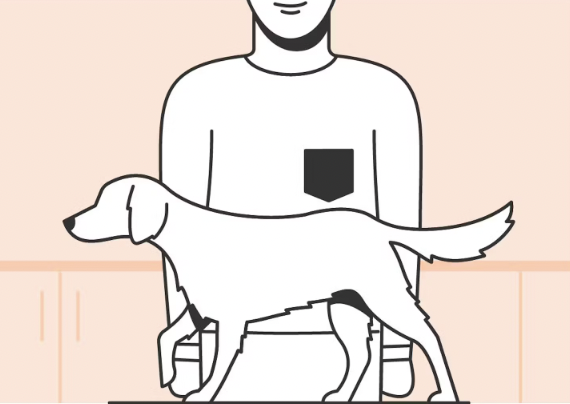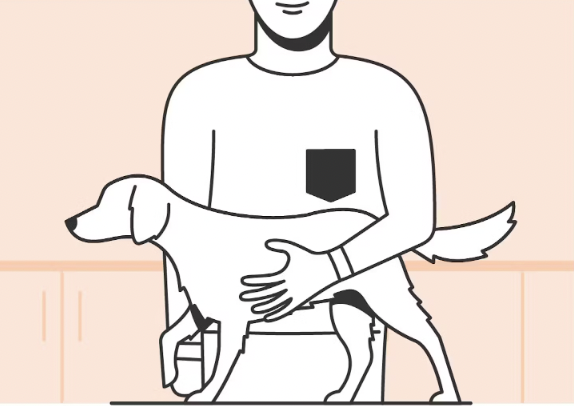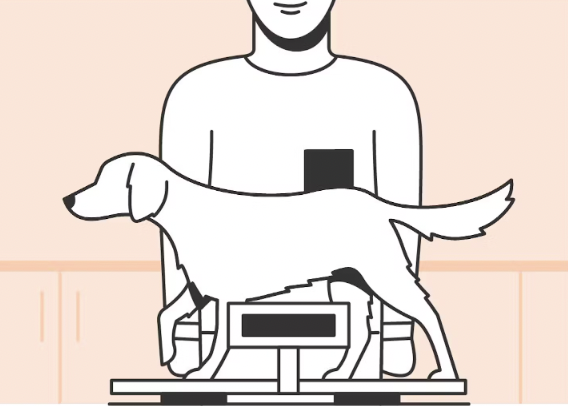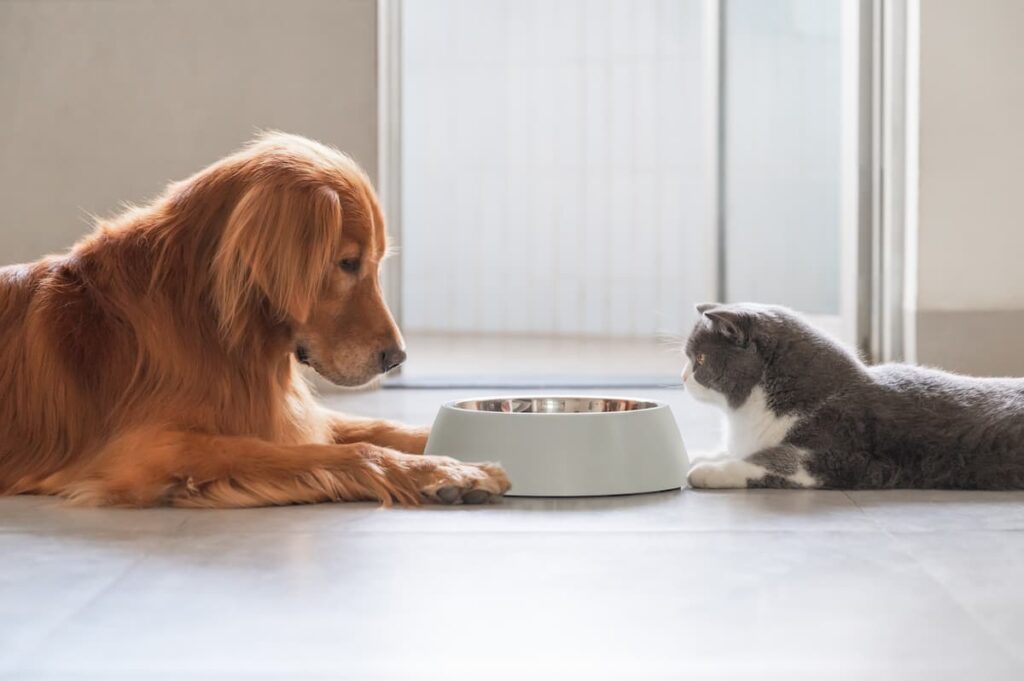Just like humans monitor their BMI, it’s crucial for dog and cat owners to understand their pet’s Body Condition Score (BCS). This scoring system helps assess their body fat reserves and overall health status.
Maintaining a healthy weight is essential not only for your pet’s mobility but also for preventing various health issues associated with being overweight or underweight. Ensuring your dog or cat stays within a healthy weight range can significantly enhance their quality of life and longevity.
What is a Body Condition Score (BCS) for dogs & cats?
The Body Condition Score (BCS) is a quantitative assessment used to determine the amount of fat on a pet’s body. This scoring system typically ranges from a 5-point scale to a more detailed 9-point scale, where each point has specific criteria regarding the visibility of ribs, waist and abdominal tuck.
The lower end of the scale indicates that the animal is underweight, the middle range represents an ideal weight, and the higher end signifies overweight.
For visual clarity, owners can refer to charts like those supplied by the Victorian Department of Agriculture, which illustrate different BCS levels with detailed descriptions.
How to assess your dog’s body condition score
Assessing your dog’s BCS involves both visual and tactile evaluations. Here’s how you can perform a BCS assessment at home:
- Visual assessment
Look at your dog from above and from the side. A dog in healthy condition should have a noticeable waist behind the ribs when viewed from above and a slight abdominal tuck when viewed from the side.
- Tactile assessment
Feel your dog’s ribs and surrounding area. The ribs should be palpable without excess fat covering them, and the outline of the ribs should be discernible under a thin layer of fat.
- Check the base of the tail
Feel the base of your dog’s tail where it meets the body. You should be able to feel the bones, but they shouldn’t be protruding excessively.
- Examine their hip bones
Observe the hip bones; they should be covered with a moderate amount of fat and should not be visibly protruding.
For a comprehensive guide and visual aids on how to accurately determine your dog’s BCS, visit Pet Chemist’s blog on managing your pet’s weight. Additionally, tools like the Pet Weight Check and this article on how to tell if your dog is overweight can offer further guidance.
By regularly checking your dog’s body condition score, you can take active steps to manage their weight effectively, ensuring they remain happy, healthy, and active throughout their life.
Take global pet food Royal Canin’s approach – Look, Feel, Weigh – to check the BCS for a dog.



Ideal body condition score for different dog breeds
The ideal Body Condition Score (BCS) for a dog can vary based on breed, body type, and even age. For example, sighthounds like Greyhounds naturally have less body fat and a more visible ribcage, making a slightly lower BCS normal for them.
In contrast, stockier breeds such as Labradors or Bulldogs may be prone to weight gain and require vigilant monitoring to maintain an ideal BCS. It’s important for dog owners to familiarise themselves with the specific BCS recommendations for their breed. Breed-specific guidelines available through veterinarian associations or breed clubs can provide valuable insights into what an ideal BCS looks like for your particular dog.
What if my pet’s Body Condition Score is not ideal?
If your cat or dog’s BCS indicates they’re either overweight or underweight, it’s important to understand the potential health risks associated with each. Overweight dogs are at higher risk for diseases such as diabetes, joint problems, and heart disease.
Underweight dogs may suffer from nutritional deficiencies or underlying health issues. In either case, it’s crucial to consult with a veterinarian who can provide personalised advice and a tailored diet and exercise plan. Regular check-ups will help ensure that any weight issues are managed effectively, promoting better health outcomes for your pet.
Tips for maintaining your pet’s ideal body condition score
Maintaining your dog or cat’s ideal BCS involves a balance of nutrition and exercise that suits their breed, age, and health status. Here are some tips:
- Healthy diet
Choose high-quality dog food and cat food that fits their nutritional needs. Be mindful of the feeding guidelines on the food package, and adjust portions to align with your cat or dog’s activity level and health requirements.
Another great tip is to work with your vet to use weight control prescription diets that you can order straight from Pet Chemist online.
- Portion control
Avoid overfeeding by measuring their food with a standard measuring cup and feeding two smaller meals a day instead of one large one.
- Regular exercise
Ensure your dog gets appropriate exercise based on their breed and age. Activities could range from brisk walking to more vigorous playing or training sessions. You can also check out dog walking services like Mad Paws to help.
- Breed-specific needs
Consider any specific health predispositions your breed may have towards weight gain or loss, and adjust care routines accordingly.
Consulting with a veterinarian or an animal nutritionist is recommended to create a plan that addresses your pet’s specific needs effectively.

Frequently Asked Questions (FAQs)
What’s the difference between body condition score and weight?
The Body Condition Score (BCS) and weight are two distinct measures that provide different insights into a dog’s health. Weight is a quantitative measure and simply tells how much a dog weighs, which can be influenced by factors like breed, bone structure, and height.
On the other hand, the BCS is a qualitative assessment that evaluates the amount of fat on a dog’s body and provides a more comprehensive understanding of their overall physical condition. It considers factors like how easily ribs are felt, the visibility of waist and abdominal tuck, and whether fat is palpable on the body.
Why is body condition score more important than just weight for dogs?
While weight can provide a basic indication of a dog’s size, it doesn’t distinguish between muscle and fat or take into account the dog’s overall body composition. The Body Condition Score (BCS), however, assesses the distribution and amount of body fat, which is more indicative of a dog’s health status. A healthy BCS helps ensure a dog has the right balance of body fat, which is crucial for supporting metabolism, protecting internal organs, and maintaining thermal insulation. Thus, BCS is a more useful tool for determining if a dog is at a healthy weight, underweight, or overweight, which directly impacts their health and wellbeing.
How often should I assess my dog’s body condition score?
It’s recommended to assess your dog’s Body Condition Score at least once a month. This regular check helps identify any changes in their weight that may not be obvious just by looking at them or on the scale. Frequent assessments are particularly important for dogs prone to weight changes, such as those with previous weight issues or those in highly active or sedentary lifestyles.
Should I take my dog or cat to the vet for a body condition score assessment?
While it’s beneficial to learn how to assess your dog or cat’s Body Condition Score at home, having a professional evaluation during regular veterinary check-ups is also recommended. Vets can provide a more objective assessment and offer tailored advice based on the BCS, particularly if there are concerns about weight management or underlying health issues.
I’m not sure I can feel my pet’s ribs. Does that mean they’re overweight?
If you cannot feel your pet’s ribs at all, it typically suggests that they may be overweight. Ideally, you should be able to feel the ribs with a slight fat covering. If the ribs are very prominent with minimal to no fat, then the dog might be underweight. It’s essential to achieve a balance where the ribs are palpable without excessive fat covering them.
My pet has a thick coat. Does that make it harder to assess their body condition score?
A thick coat can indeed make it more challenging to assess the Body Condition Score as it can mask some of the physical indicators like rib visibility or waist definition. In such cases, it’s important to rely more on tactile assessments, such as feeling for ribs, checking the waist indentation, and assessing fat cover around the abdomen and base of the tail.
My dog seems to have a pouch of skin behind their front legs. Is that part of the body condition score assessment?
The pouch of skin behind the front legs is usually not included in the BCS assessment as it can be a natural part of a dog’s anatomy, especially in certain breeds or older dogs. BCS focuses more on overall body fat distribution and muscle mass visible around the ribs, waist, and abdomen.
Is there a difference in how I assess the body condition score for puppies or senior dogs?
Yes, assessing the Body Condition Score can vary slightly for puppies and senior dogs. Puppies may have a different body composition as they are still growing, and it’s normal for them to have a bit more fat. Senior dogs, on the other hand, might lose muscle mass as they age, which can affect how their body condition is assessed. It’s important to adapt the assessment slightly for these age groups and consider their specific developmental or ageing stages when determining their ideal BCS.
Conclusion
Regularly assessing your pet’s Body Condition Score is a crucial part of monitoring their health and wellbeing. By keeping a close eye on their weight, you can help ensure they maintain a healthy lifestyle that promotes longevity and happiness.
Book regular veterinary check-ups and stay informed about the best practices for keeping your dog or cat at a healthy weight. Remember, a healthy pet is a happy pet, and their wellbeing is worth every effort!
